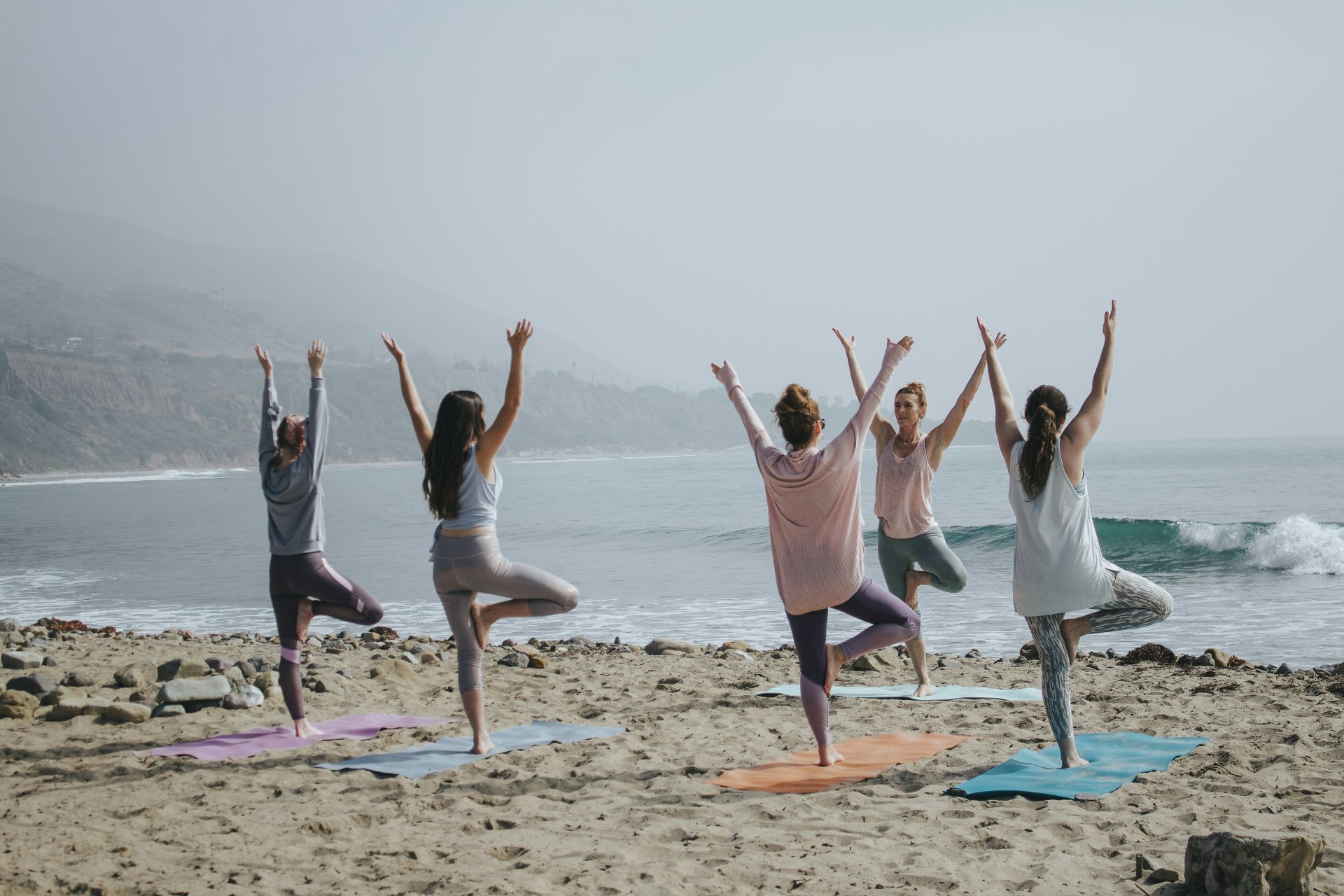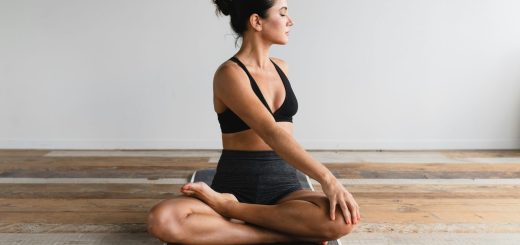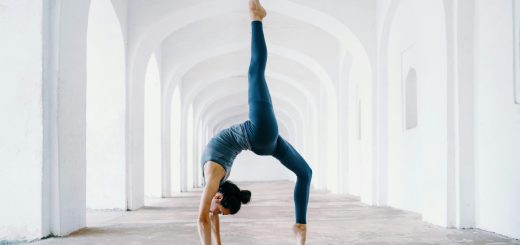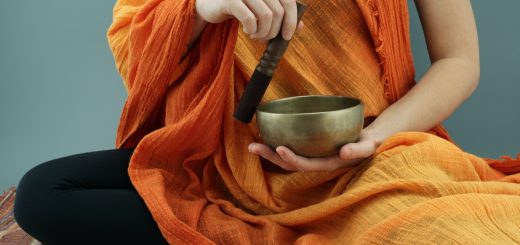Yoga Poses for Sciatica Relief: Alleviate Discomfort

Hey there, amazing readers! 🖐️ Just a quick note: yes, we know there are a lot of ads here. Trust us, we get it—it’s not the prettiest look, but they help us keep this blog alive and kicking. Those pesky little ads cover the costs of all the behind-the-scenes magic, from hosting and tech stuff to creating content we hope you’ll love.
We’re committed to delivering quality posts, and your support (even just sticking around despite the ads) means everything to us. So, bear with us, and thanks for helping us keep the good vibes rolling. Now, on to the fun stuff! 😉
TRANSLATE BUTTON AT THE END OF THE ARTICLE
Introduction: Understanding Sciatica and Yoga
Sciatica is a common condition that causes pain, numbness, and tingling along the sciatic nerve, which runs from the lower back down the back of each leg.
The pain associated with sciatica can be debilitating, making everyday activities a challenge.
Yoga can be a valuable tool in managing sciatica symptoms by stretching and strengthening the muscles that support the spine and improving flexibility.
By incorporating specific yoga poses into your routine, you can help alleviate discomfort and prevent future flare-ups of sciatica.
Cobra Pose: Strengthening the Lower Back
Cobra Pose, also known as Bhujangasana, is a gentle backbend that can help strengthen the lower back muscles and improve flexibility in the spine.
To perform Cobra Pose, lie on your stomach with your palms flat on the mat, elbows bent, and legs extended.
As you inhale, slowly lift your chest off the mat, keeping your shoulders relaxed and your gaze forward.
Hold the pose for a few breaths before lowering back down.
This pose can help alleviate tension in the lower back and provide relief from sciatica pain.
Downward Facing Dog: Lengthening the Spine
Downward Facing Dog, or Adho Mukha Svanasana, is a popular yoga pose that can help lengthen the spine and stretch the hamstrings, calves, and back muscles.
To practice Downward Dog, start on your hands and knees, then lift your hips up and back, straightening your arms and legs to form an inverted V shape.
Press your hands firmly into the mat and draw your navel towards your spine to engage the core.
This pose can help release tension in the lower back and provide relief from sciatic pain.
Pigeon Pose: Opening the Hips
Pigeon Pose, or Eka Pada Rajakapotasana, is a hip-opening yoga pose that can help relieve tightness in the hips and lower back, which can contribute to sciatica pain.
To practice Pigeon Pose, start in a high plank position, then bring your right knee towards your right wrist and extend your left leg behind you.
Lower your hips towards the mat and square your hips towards the front of the mat.
Stay in this pose for a few breaths before switching sides.
Pigeon Pose can help release tension in the hips and improve mobility in the lower back.
Child’s Pose: Easing Lower Back Tension
Child’s Pose, or Balasana, is a restorative yoga pose that can help release tension in the lower back and hips, making it an excellent choice for relieving sciatica pain.
To practice Child’s Pose, start on your hands and knees, then sit back on your heels and extend your arms forward, resting your forehead on the mat.
Allow your spine to lengthen and relax in this position, focusing on deep breathing to release tension in the lower back.
Child’s Pose can help relax the muscles in the lower back and provide relief from sciatica discomfort.
Cat-Cow Stretch: Mobilizing the Spine
The Cat-Cow Stretch is a gentle yoga flow that helps mobilize the spine and improve flexibility in the back muscles, making it beneficial for relieving sciatica pain.
To practice Cat-Cow, start on your hands and knees in a neutral tabletop position.
As you inhale, arch your back and lift your gaze towards the ceiling (Cow Pose), then as you exhale, round your back and tuck your chin towards your chest (Cat Pose).
Flow between Cat and Cow Pose, moving with your breath to mobilize the spine and release tension in the lower back.
This gentle stretch can help alleviate discomfort associated with sciatica.
Bridge Pose: Strengthening Glutes
Bridge Pose, or Setu Bandhasana, is a backbend that can help strengthen the glutes, hamstrings, and lower back muscles, which can provide relief from sciatica pain.
To practice Bridge Pose, lie on your back with your knees bent and feet hip-width apart.
Press into your feet and lift your hips towards the ceiling, engaging your glutes and core muscles.
Hold the pose for a few breaths before slowly lowering back down.
Bridge Pose can help strengthen the muscles that support the spine and improve stability, reducing the risk of sciatica flare-ups.
Seated Spinal Twist: Loosening the Lower Back
Seated Spinal Twist, or Ardha Matsyendrasana, is a seated yoga pose that can help mobilize the spine and stretch the muscles in the lower back, providing relief from sciatica pain.
To practice Seated Spinal Twist, sit with your legs extended in front of you, then bend your right knee and cross it over your left leg, placing your right foot on the floor.
Twist towards the right, placing your left elbow on the outside of your right knee and looking over your right shoulder.
Hold the twist for a few breaths before switching sides.
Seated Spinal Twist can help release tension in the lower back and improve flexibility in the spine.
Reclining Hand-to-Big-Toe Pose: Stretching Hamstrings
Reclining Hand-to-Big-Toe Pose, or Supta Padangusthasana, is a yoga pose that can help stretch the hamstrings and lower back muscles, improving flexibility and relieving sciatica pain.
To practice Reclining Hand-to-Big-Toe Pose, lie on your back with your legs extended.
Lift your right leg towards the ceiling, holding onto the big toe with your right hand or using a strap.
Keep your left leg extended on the mat and relax your shoulders and neck.
Hold the pose for a few breaths before switching legs.
This pose can help stretch the hamstrings and release tension in the lower back, providing relief from sciatic discomfort.
Standing Forward Fold: Relieving Sciatic Nerve Pressure
Standing Forward Fold, or Uttanasana, is a yoga pose that can help relieve pressure on the sciatic nerve and improve flexibility in the hamstrings and lower back.
To practice Standing Forward Fold, stand with your feet hip-width apart and fold forward from the hips, bringing your hands towards the floor or holding onto your elbows.
Relax your head and neck, allowing gravity to gently stretch the hamstrings and lower back.
Hold the pose for a few breaths before slowly coming back up.
Standing Forward Fold can help release tension in the lower back and alleviate pressure on the sciatic nerve, providing relief from sciatica pain.
Extended Triangle Pose: Improving Sciatica Symptoms
Extended Triangle Pose, or Utthita Trikonasana, is a standing yoga pose that can help improve sciatica symptoms by stretching the hamstrings, hips, and lower back muscles.
To practice Extended Triangle Pose, stand with your feet wide apart and extend your arms out to the sides.
Hinge at the hips and reach your right hand towards your right foot, keeping your left arm extended towards the ceiling.
Keep your chest open and gaze towards the ceiling.
Hold the pose for a few breaths before switching sides.
Extended Triangle Pose can help stretch and strengthen the muscles that support the spine, improving posture and reducing sciatic pain.
Conclusion: Incorporating Yoga for Sciatica Relief
Incorporating yoga into your daily routine can be a valuable tool in managing sciatica symptoms and alleviating discomfort.
By practicing specific yoga poses that target the muscles in the lower back, hips, and legs, you can improve flexibility, strengthen the core muscles, and release tension in the spine, providing relief from sciatica pain.
It is important to listen to your body and practice yoga mindfully, focusing on proper alignment and breathing techniques to maximize the benefits of each pose.
Consult with a healthcare provider or a qualified yoga instructor before starting a new yoga practice, especially if you have underlying health conditions or injuries.
With consistent practice and dedication, yoga can be a powerful ally in managing sciatica and promoting overall well-being.

The Enlightenment Journey is a remarkable collection of writings authored by a distinguished group of experts in the fields of spirituality, new age, and esoteric knowledge.
This anthology features a diverse assembly of well-experienced authors who bring their profound insights and credible perspectives to the forefront.
Each contributor possesses a wealth of knowledge and wisdom, making them authorities in their respective domains.
Together, they offer readers a transformative journey into the realms of spiritual growth, self-discovery, and esoteric enlightenment.
The Enlightenment Journey is a testament to the collective expertise of these luminaries, providing readers with a rich tapestry of ideas and information to illuminate their spiritual path.
Our Diverse Expertise 🌟
While our primary focus is on spirituality and esotericism, we are equally passionate about exploring a wide range of other topics and niches 🌍📚. Our experienced team is dedicated to delivering high-quality, informative content across various subjects ✨.
To ensure we provide the most accurate and valuable insights, we collaborate with trusted experts in their respective domains 🧑🏫👩🏫. This allows us to offer well-rounded perspectives and knowledge to our readers.
Our blog originally focused on spirituality and metaphysics, but we’ve since expanded to cover a wide range of niches. Don’t worry—we continue to publish a lot of articles on spirituality! Frequently visit our blog to explore our diverse content and stay tuned for more insightful reads.






